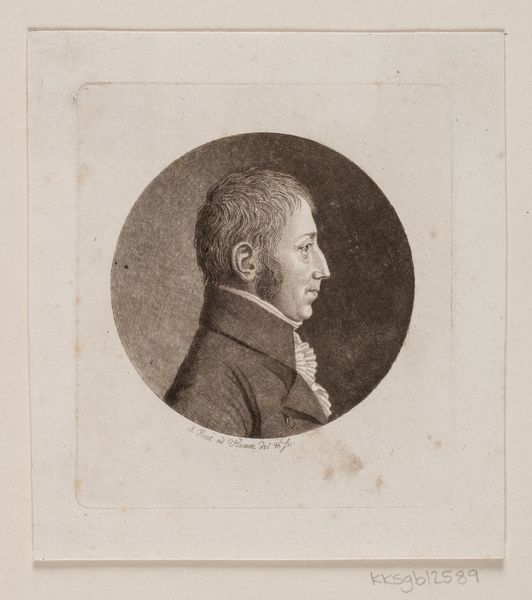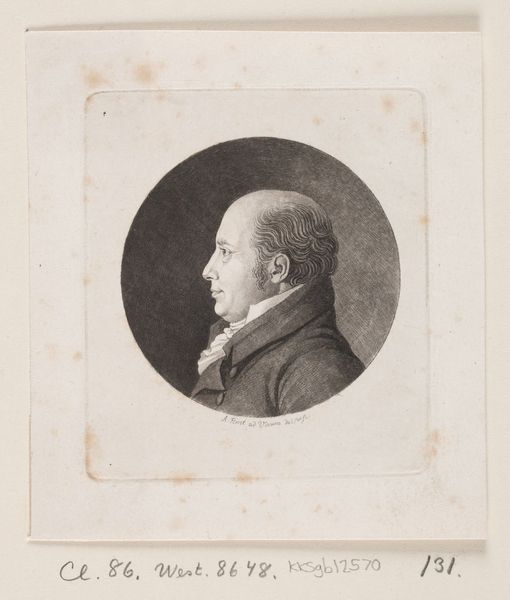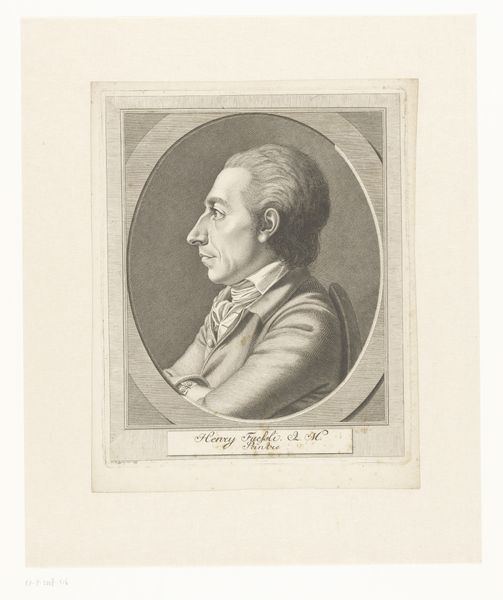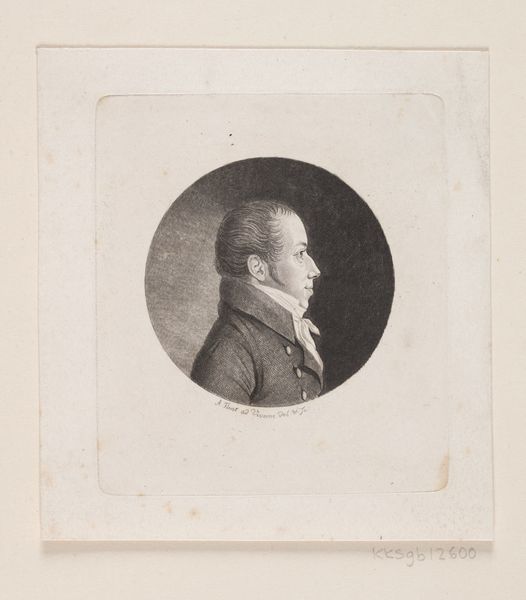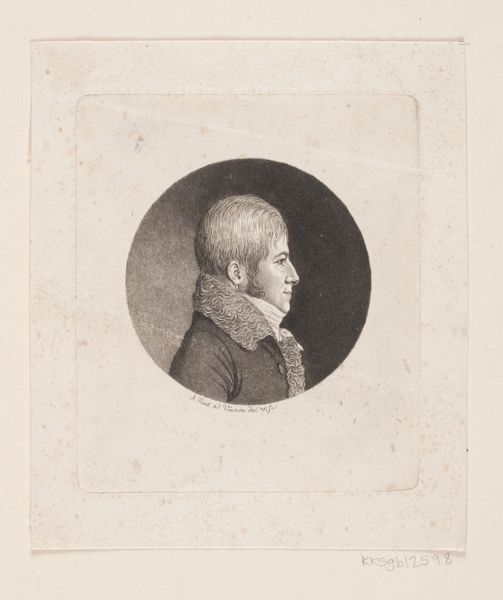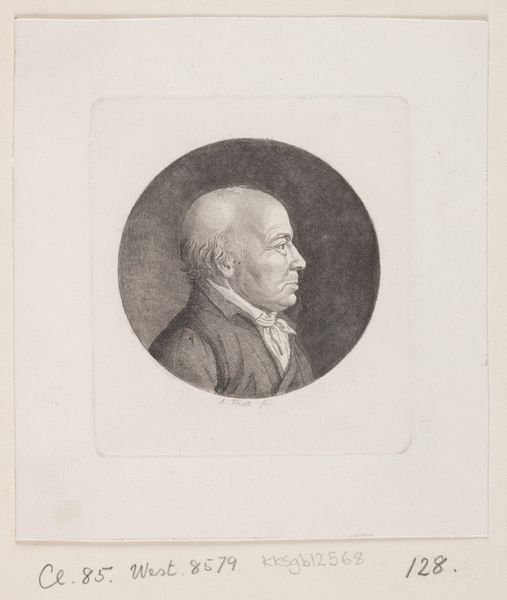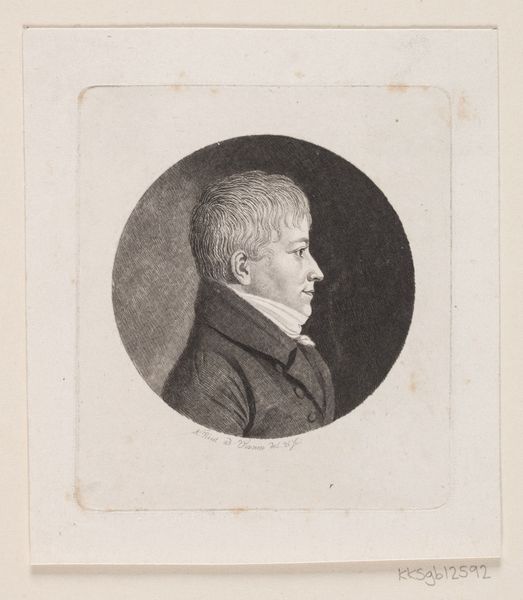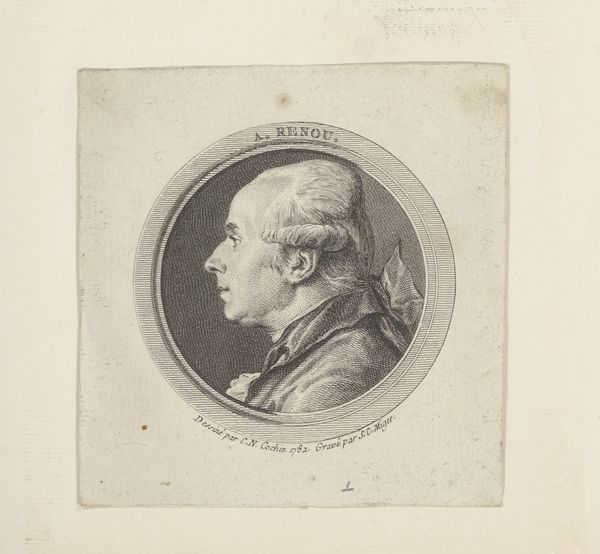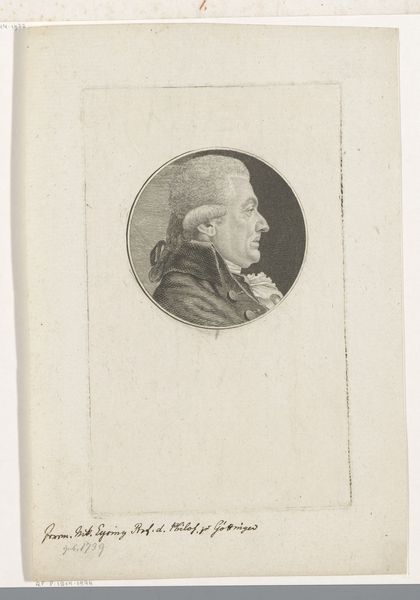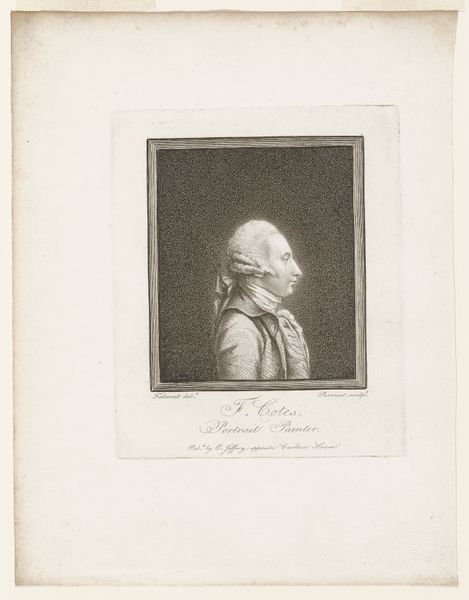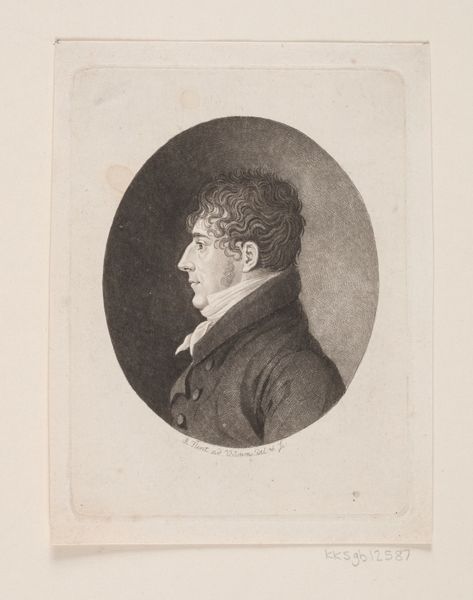
print, engraving
#
portrait
#
neoclacissism
# print
#
figuration
#
pencil drawing
#
line
#
engraving
#
realism
Dimensions: 60 mm (None) (billedmaal), 83 mm (height) x 73 mm (width) (plademaal)
Curator: Here we have Andreas Flint’s “Unknown Man's Portrait”, likely created between 1767 and 1824. It's a striking engraving, a perfect example of neoclassical portraiture in print. Editor: The immediate feeling is one of quiet authority, almost melancholy. He’s framed within this stark, dark circle which isolates him, makes you focus entirely on his face. Curator: Precisely. The circle, or tondo, serves as an important iconographic element. In the Neoclassical period, this shape, harking back to classical antiquity, implies not just refinement but a specific mode of virtuous self-presentation. Look at the way Flint employs line, that realism and precision. It mirrors the rationalist ideals circulating at the time. Editor: But an “unknown man”? The very title draws attention to the missing context, the societal narratives absent from the portrait. Was this a deliberate omission, an erasure of sorts? How might social standing, access to portraiture itself, play into who is remembered and how? Curator: It opens many potential avenues for analysis. The lack of an identifying marker could speak to a broader societal phenomenon. Printmaking allowed for a certain level of democratization, but these images, their very creation, was usually controlled by certain classes of people. The very deliberate rendering, combined with the “unknown” status of the man portrayed adds layers of ambiguity. Editor: It invites us to speculate on this individual's role, and by extension, the role of countless unnamed figures of history whose likenesses remain uncaptured. He embodies all those forgotten by the historical narratives in that way. Curator: It's fascinating how this ostensibly simple image becomes a complex meditation on identity, social memory, and the gaze. Editor: Absolutely. Even a seemingly straightforward portrait like this one holds within it multitudes, challenging us to consider who holds the brush and the story it seeks to paint or erase.
Comments
No comments
Be the first to comment and join the conversation on the ultimate creative platform.
